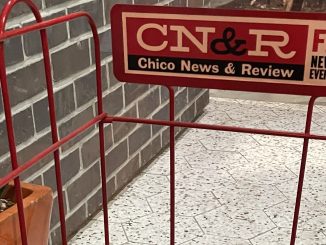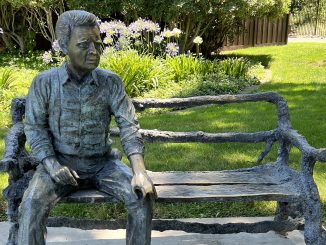
Each year at around this time, I write about the awards the CN&R picks up in the annual journalism competition put on by the California News Publishers’ Association. I give a rundown in Second & Flume, lavishing praise upon the paper’s small, hardworking staff. It’s something my predecessor, Robert Speer, used to do. And it’s a tradition I rolled with when I succeeded him in 2013.
This is the first year since then—and I’m certain the first time since this paper began competing in the contest, the only one we regularly enter—that we’re unable to brag about bringing home honors. But it’s certainly not because the CN&R didn’t produce award-worthy coverage in 2020.
Off the top of my head, I can think of many excellent stories (and Art Director Tina Flynn’s design) that would have been contenders. Like Ashiah Scharaga’s cover story about the massive backlog of Camp Fire survivors—literally thousands of people—awaiting disaster case managers some 16 months after the blaze, many living in near squalor in cars and RVs. Or Evan Tuchinsky’s great reporting on COVID-19 locally, along with myriad other topics, such as the controversial syringe program. Or Ken Smith’s continued in-depth, nuanced coverage of local homelessness. Then, of course, Jason Cassidy has been making sure the local arts scene isn’t forgotten—and doing so while serving as interim editor of this now-monthly publication.
Alas, we didn’t submit any contest entries. See, it’s hard to justify spending money on submissions to a writing competition when we’re counting every precious dollar to keep the paper afloat through the pandemic.
Despite operating with an extremely pared down staff, including yours truly working very part-time—one-quarter time, to be precise—the paper isn’t generating enough ad revenue. Even on the eve of the state’s reopening, we expect that’s going to be the case for the foreseeable future. Indeed, while we’re still trying to figure out a long-term plan—and a return to weekly print—we already know that we cannot rely solely upon advertising.
You may have noticed a campaign about our spring fundraising drive. Several dedicated readers have already pledged to give the paper monthly donations—aid that has been critical to getting us this far—and we’re now hoping to increase the number that brings us closer to sustainability.
This is a new model for the CN&R and newspapers in general, many of which are likewise exploring ways to keep their heads above water. Sadly, many have folded for good.
For some people, it’s an easy sell. They understand that the work we do takes money, and how the CN&R is basically a for-profit business doing nonprofit work. I can’t think of a more accessible resource for people to get important local news.
Seriously. The CN&R is free (read: available to anyone regardless of income), it’s distributed throughout Butte County (and also in Glenn and Tehama counties), and we even have a new smartphone-friendly website (good riddance to our former Jurassic-era platform).
Thanks to everyone who has continued to support the CN&R, the region’s only long-term consistent source for local in-depth and investigative reporting, as well as the most comprehensive coverage of the arts.
As a reminder, last year, among the nine honors we received in the California Journalism Awards, going up against the largest weekly papers in the state, three were for first place: Coverage of Business News, Arts & Entertainment Coverage, and Public Service. The latter was the biggie. It stemmed largely from a series of investigative stories, based on public records, that outlined the scope of the water contamination on the Ridge post-Camp Fire. It also included several editorials taking the state water board and other public agencies to task for failing to protect the public.
In the CNPA’s glossy awards magazine, where the winners are listed, the CN&R was one of the few newspapers selected to be featured with its own story highlighting the award-winning work. I was interviewed by a reporter and spoke about the series, which, aside from the editorials, was written by Meredith J. Cooper. It was the kind of recognition usually reserved for big metro papers, newsrooms with dozens of reporters and editors.
So, how is it that the CN&R was able to reveal what the huge national newspapers missed, though they were initially focused on the effects of the mega fire? It’s because this is our home and we are invested in it. Truly, there are much easier and better-paying jobs than working at a community newspaper. Yet we’re still committed. We’re still here.




Be the first to comment